After reviewing 51 entries by 93 Grade 7 to 12 student-researchers from public and private schools nationwide, the Department of Education has announced the Best Six Projects of the recently concluded 2019 National Science and Technology Fair (NSTF), sponsored by the Gokongwei Brothers Foundation (GBF).
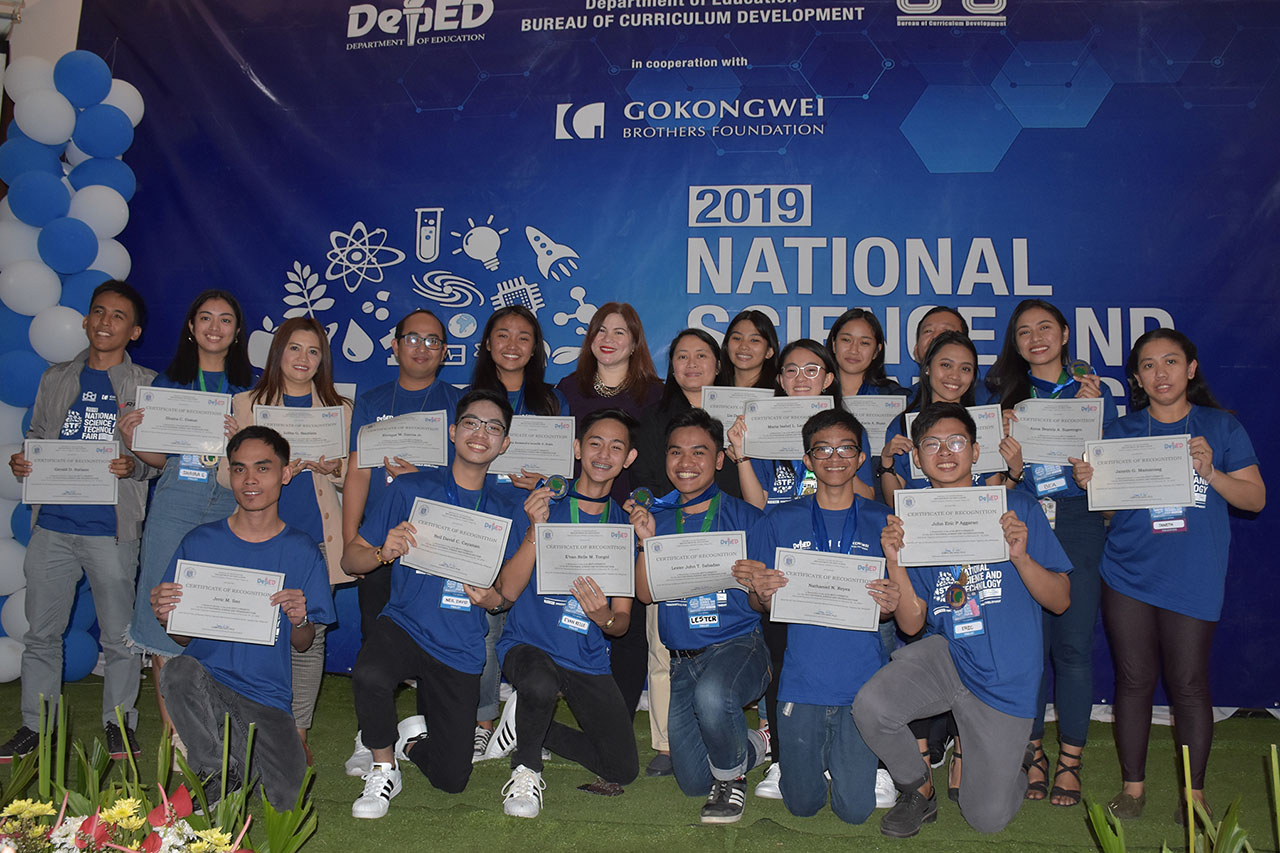
The said projects, representing the work of 12 high school student-researches, were selected from the winners of the individual and team competitions under the Physical Science, Life Science, and Robotics and Intelligent Machines categories. They’re now one step closer to having the chance of representing the Philippines at this year’s Intel International Science and Engineering Fair (ISEF) and receiving the Gokongwei Brothers Foundation Young Scientist Award. GBF will support the Philippine delegation with an all-expenses-paid trip to the competition, billed as the Olympics of high school science fairs, to be held from May 12 to 17 in Phoenix, Arizona.
“The goal of the Gokongwei Brothers Young Scientist Award is to respond to your call for opportunities and to recognize our globally competitive young scientists who, amid adversity and the challenges in our country, did not use that as a stumbling block to achieve great work and excellence in STEM [Science, Technology, Engineering, and Mathematics]. I think that represents not only great intelligence but strength of character as well,” shared GBF Executive Director Grace Colet during the NSTF 2019 closing ceremony on February 21.
In an earlier statement, GBF said that it is honored to support future leaders in the STEM field among today’s young Filipino science researchers and innovators in K to 12. It should be noted that in most developed countries, the growth of STEM occupations outpaces those of non-STEM careers. And as the Philippine economy grows, increased value will be placed on employees or workers with solid STEM backgrounds. In theory, STEM education trains people to be adept in problem solving, increases their science literacy, and enables the generation of new ideas, products and processes—all crucial for the continued growth of our economy. With GBF’s support, the importance of STEM is inculcated in the hearts and minds of the bright young student-researchers at the NSTF.
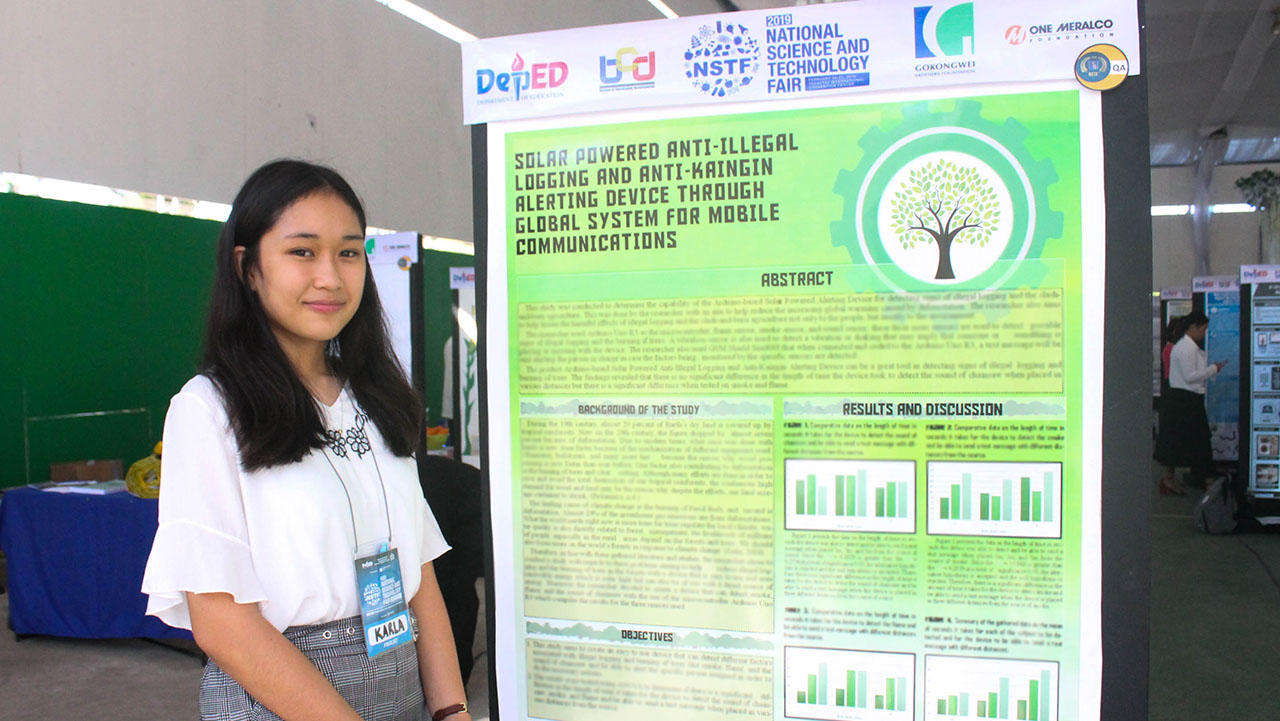
Among those vying to represent the country at Intel ISEF 2019 is Grade 10 student Maryjoise Karla Buan from Pangasinan National High School who hopes to save the environment one tree at a time. When visiting her father who works at a powerplant in Sual, Pangasinan, Karla could have had a view of green mountainscapes, but she is only ever greeted by barren lands resulting from illegal logging and other destructive practices in the forest area.
With three thousand pesos, Karla developed an alerting device that can detect possible signs of illegal logging and kaingin (slash-and-burn farming). Equipped with sound, flame, and smoke sensors, the device is programmed to notify authorities and first responders such as forest rangers when the sound of a chainsaw or signs of a fire are detected. Karla’s project was recognized as NSTF 2019’s best individual research in Robotics and Intelligent Machines category.
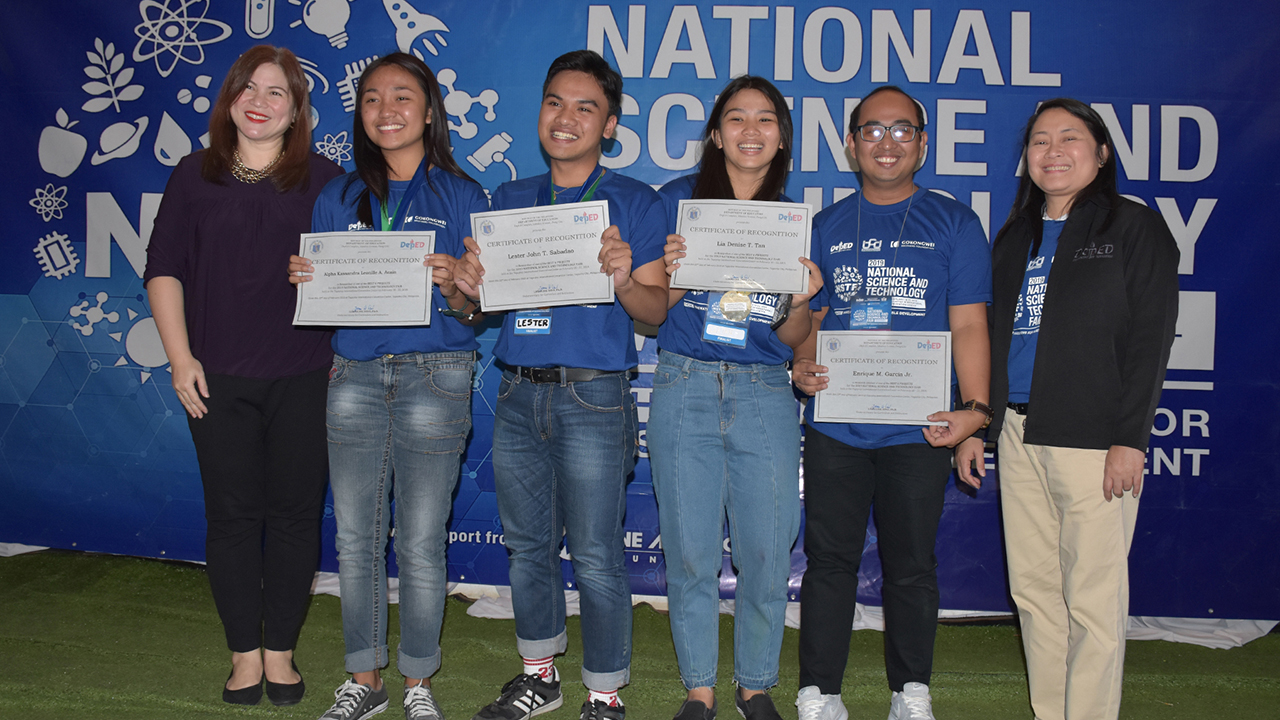
Robotics team winners Alpha Acain, Lester Sabadao, and Lia Denise Tan from Cagayan National High School. IMAGE GBF
In the team competition, the winning entry from Cagayan National High School hopes to help farmers minimize risks and increase their rate of production with an automated temperature and monitoring system for drying and storing Philippine rice varieties. Alpha Acain, Lester Sabadao, and Lia Denise Tan designed a prototype of a post-harvest equipment for local rice farmers who are still heavily dependent on traditional sun-drying and “kamalig” storage methods. The team offers an innovative and affordable solution for farmers to prevent capital losses due to crop spoilage and increase the quality of harvest.
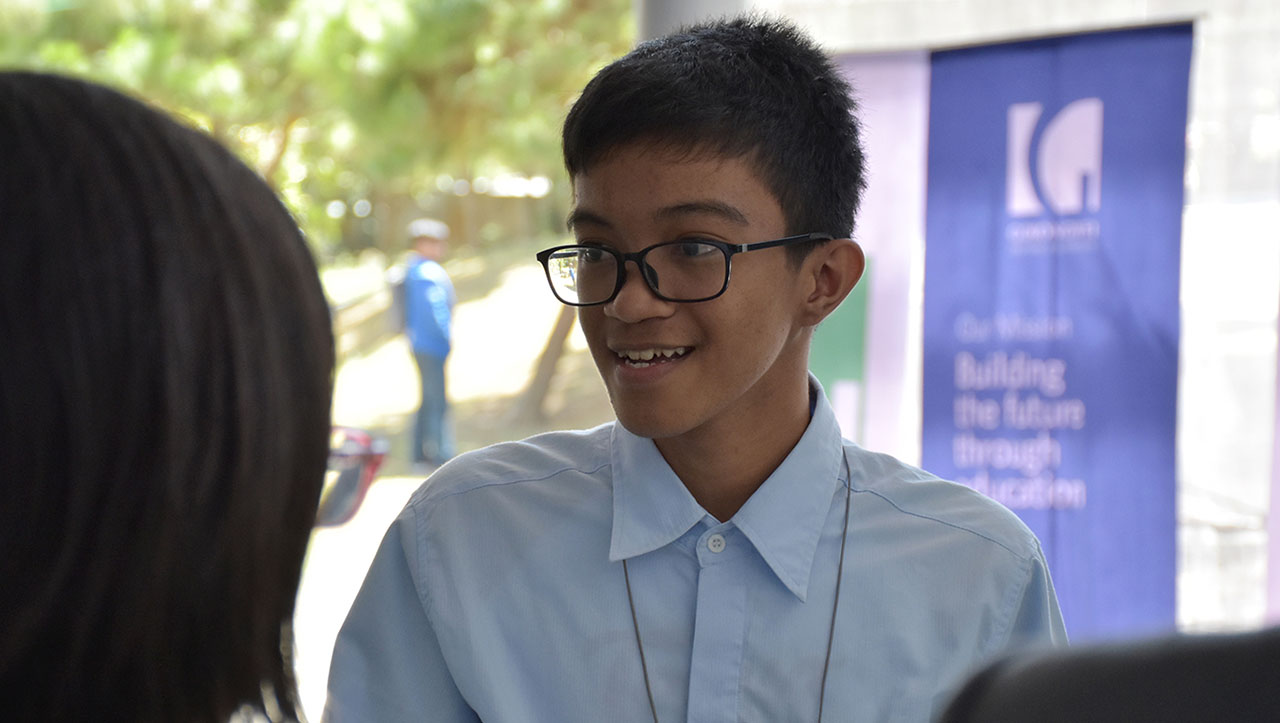
Like the Intel ISEF hopefuls from Cagayan Valley, Nathaniel Reyes of Quezon National High School hopes to benefit his community through a proposed solution to harmful algal blooms infesting aquaculture ponds in Quezon Province. NSTF 2019’s best individual research in Physical Science focused on how charcoal made out of cornstalk, an abundant waste material in Nathaniel’s community, can be used to treat the algae infestation that leads to shellfish contamination and loss of income among owners of lakes and fish ponds.
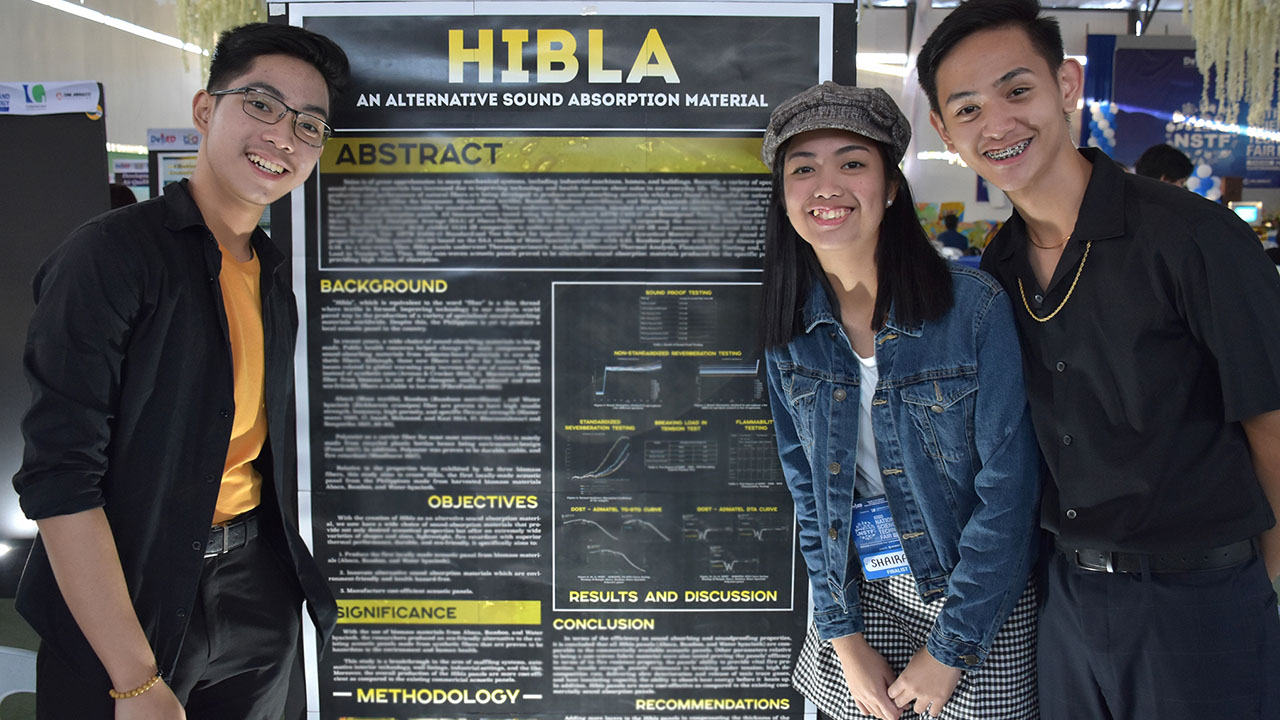
Neil David Cayanan, Shaira Gozun, and E'van Relle Tongol from Angeles City National Science High School, winners of the Physical Science team competition.
Meanwhile, the winning Physical Science research in the team competition is a potential gamechanger in the areas of muffling systems, automotive interior technology, and wall linings with their proposed cost-effective acoustic panels made from Philippine natural fibers. Neil David Cayanan, Shaira Gozun, and E’van Relle Tongol of Angeles City National Science High School used biomass materials from abaca, bamboo, and water hyacinth to produce eco-friendly sound absorption materials.
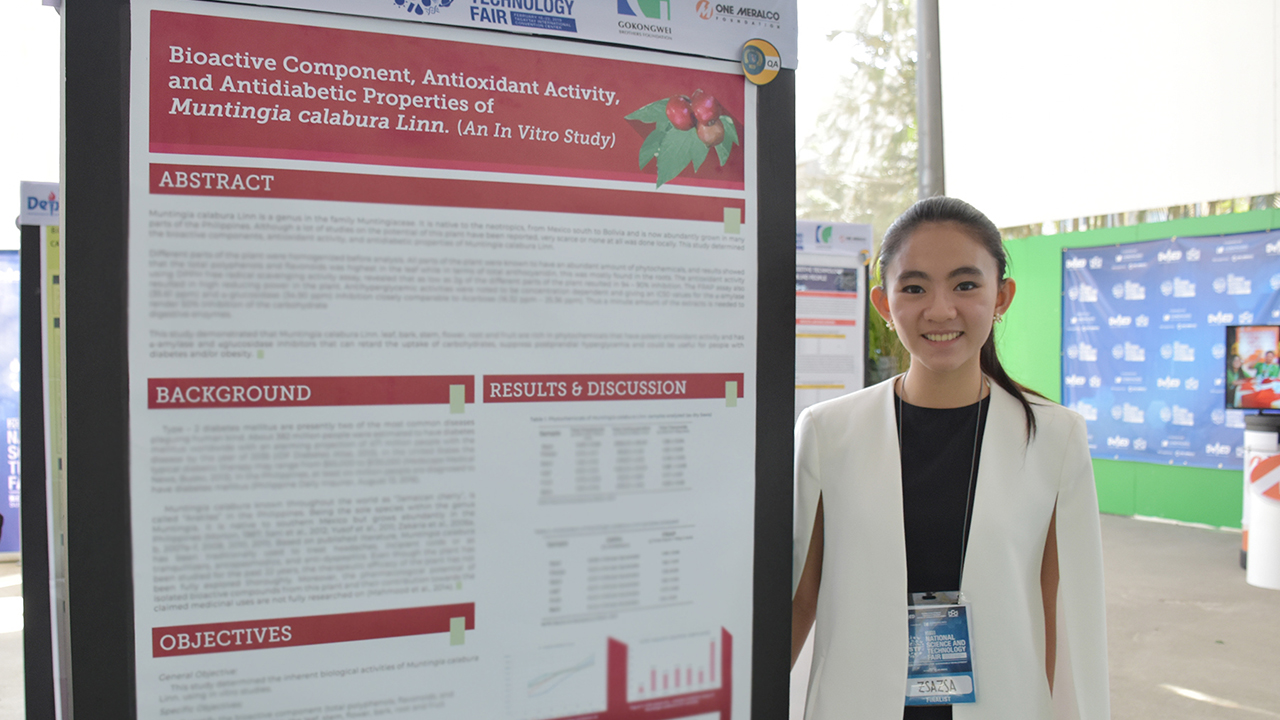
Best individual research in Life Science category winner Maria Isabel Layson of Iloilo National High School.
The best individual research in the Life Science category also looked into an abundant species in the Philippines, the “Jamaican cherry,” locally known as “aratiles.” Maria Isabel Layson of Iloilo National High School studied the antioxidant activity and antidiabetic properties of aratiles and its possible benefits to people with diabetes or obesity. With results suggesting practical application toward prevention of type 2 diabetes, the research suggests the Philippines could carve a niche in the organized development of products from aratiles, such as dietary supplements.
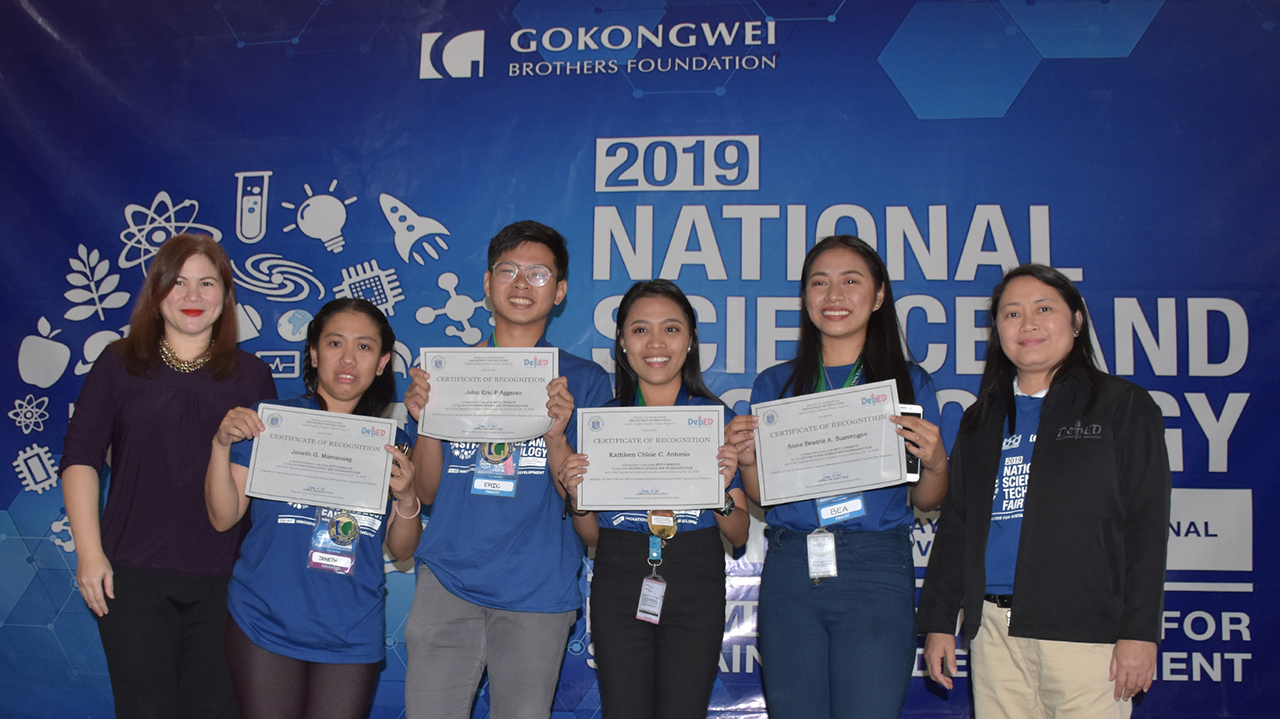
On the other hand, the Life Science research in the team competition studied a possible organic solution to fungus-caused brown eye spot disease attacking Kapeng Barako plants, one of the main threats to Cavite farmers. A perennial problem among Philippine coffee farmers, the disease is a hurdle in meeting the soaring local and international demand for the elusive coffee variety. Taguig Science High School’s John Eric Aggarao, Kathleen Chloie Antonio, and Anna Beatriz Suavengco isolated bacteria from Kapeng Barako leaves and used these as biocontrol agents to manage the disease. The results show this approach has a higher success rate versus commercial antifungal drugs in treating the disease.
The proponents of the Best 6 Projects will undergo a rigorous review and a boot camp by DepEd to ensure alignment with international standards. After which, the final delegates to the 2019 Intel International Science and Engineering Fair (ISEF) will be selected and recognized as the pioneer recipients of the Gokongwei Brothers Foundation Young Scientist Award.
At the NSTF’s closing ceremonies, GBF awarded medals to the proponents of the best six projects and announced its commitment to support the final representatives to this year’s Intel ISEF.
“I really feel hopeful about our future when I hear all of you, [especially] when you defend your projects. In our own little way, we hope to be part of the challenge of raising our future scientists, especially after seeing how much we need to do to give you more opportunities and more mentoring. We, at Gokongwei Brothers Foundation, are committed to doing that with DepEd and all of you,” Colet said.
In her remarks, DepEd’s Bureau of Curriculum Development Director and NSTF Director Jocelyn Andaya acknowledged GBF’s sponsorship of NSTF 2019. “I wish to profusely thank Gokongwei Brothers Foundation, who did not hesitate to support this endeavor and committed to continue to support this in the future,” Andaya said.
For more information on the Gokongwei Brothers Foundation, please visit www.jgsummit.com.ph/gokongwei-brothers-foundation. You may also call (02) 451-8888 loc. 1118 or email Katherine.Manalo@gbf.com.ph


